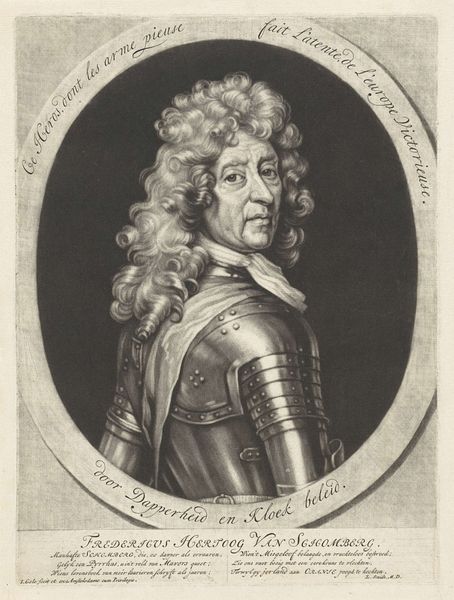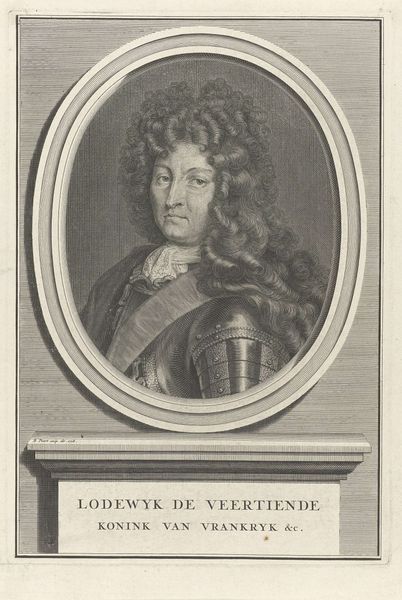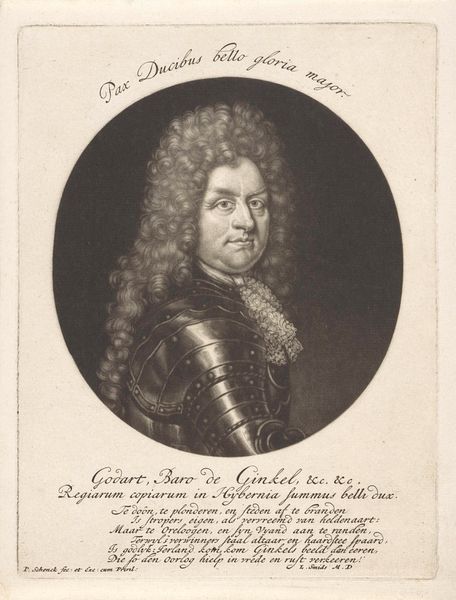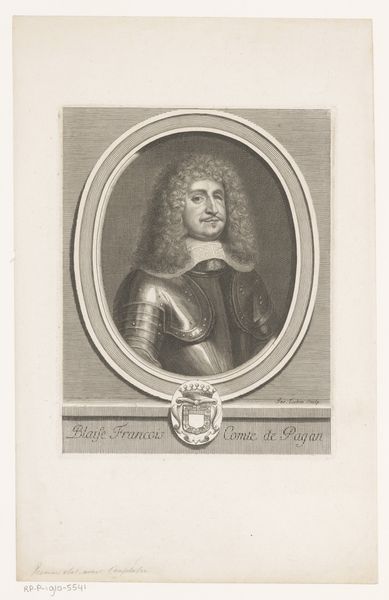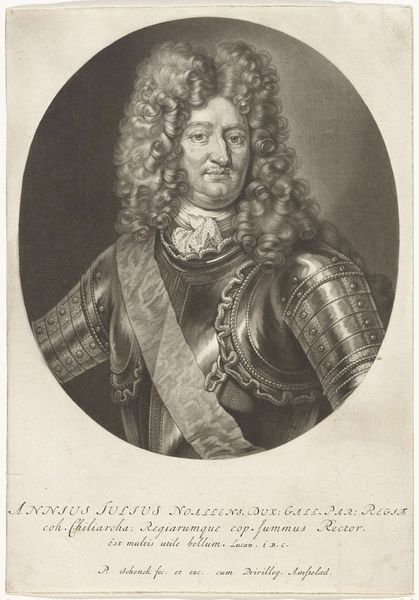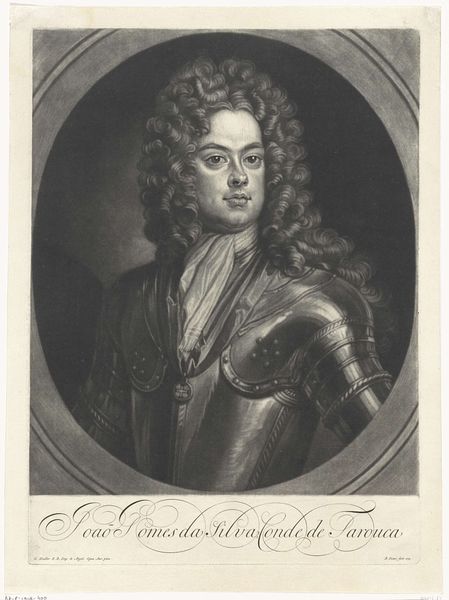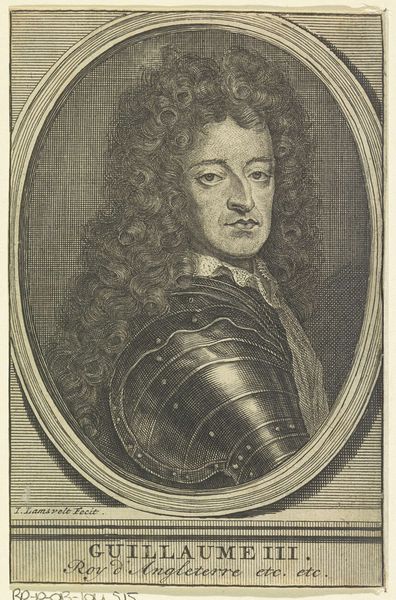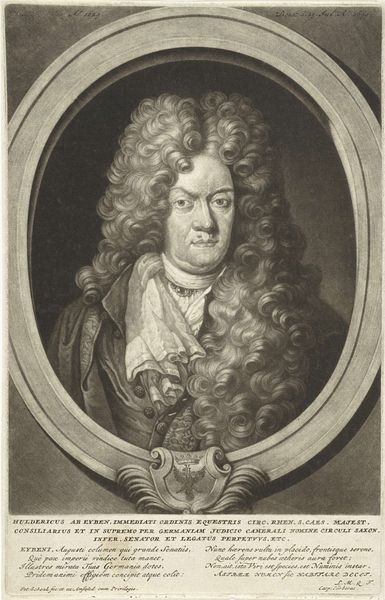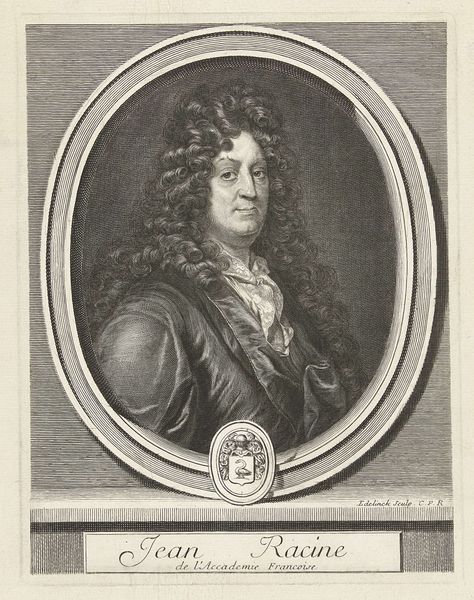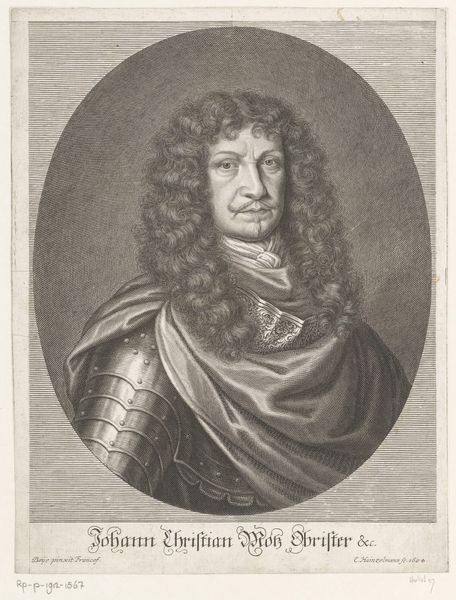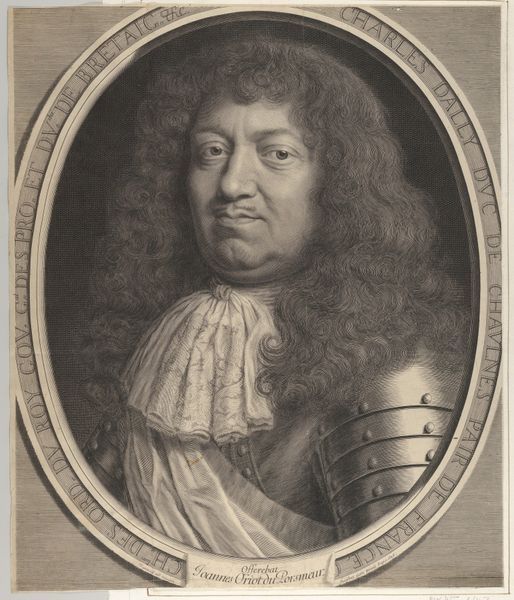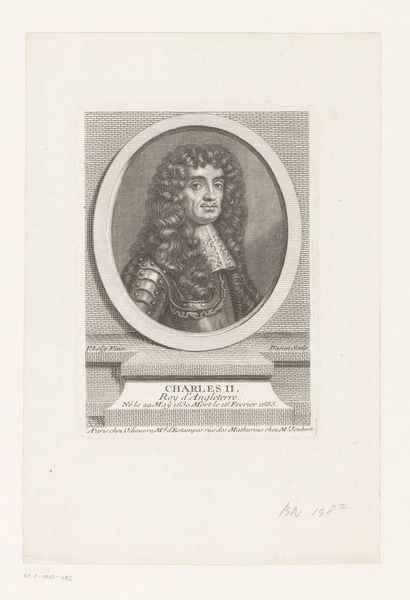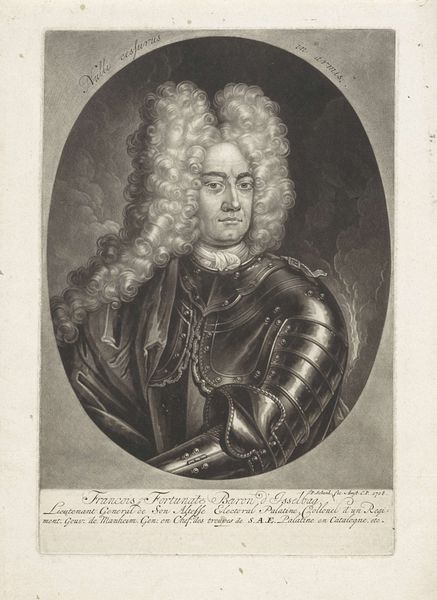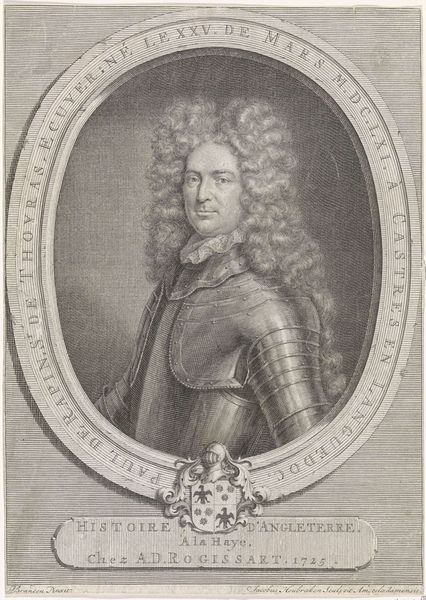
engraving
#
portrait
#
baroque
#
old engraving style
#
historical photography
#
portrait reference
#
line
#
history-painting
#
engraving
Dimensions: height 209 mm, width 153 mm
Copyright: Rijks Museum: Open Domain
Editor: So, here we have "Portret van Friedrich Arnaud, eerste hertog van Schomberg," from 1724 by Bernard Picart. It’s an engraving, giving it this detailed, almost photographic quality. The armour really stands out, lending him an imposing aura. How do you interpret this work in the context of its time? Curator: I see this portrait as a visual construction of power, deeply rooted in the political and social landscape of the 18th century. Picart's choice of engraving allows for mass production and dissemination of this image, essentially crafting a public persona for Schomberg. Consider how armor here is not necessarily a practical garment but rather a symbolic representation of military prowess and aristocratic lineage. Who do you think the audience was intended to be for such a portrait? Editor: Well, given that it's an engraving, perhaps a wider public than just the elite. Maybe it was a way to solidify Schomberg's image in the popular imagination? Curator: Exactly. This is where art becomes intertwined with political propaganda. Schomberg's family was of protestant refugees so think about how images like these helped establish and legitimise power in a new political reality where religious conflicts continued to impact social life. How do you see such images contributing to broader narratives about class and identity in the 1700's? Editor: I guess it’s like setting a standard, visually defining who holds power and how that power should be perceived. Curator: Precisely! And remember, representation matters. By controlling the narrative through images like this, the artist and the patron could influence perceptions and shape societal norms. Editor: That's a lot to consider. I never really thought about an engraving as having such power to shape political discourse. Curator: It's a powerful reminder that art is rarely neutral. Every image, especially a portrait, is making an argument about power, status, and identity. Editor: Thanks, that was incredibly insightful. It’s made me think differently about portraiture and its role in shaping our understanding of history.
Comments
No comments
Be the first to comment and join the conversation on the ultimate creative platform.
